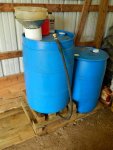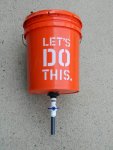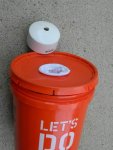Beyond Biodiesel
Active member
- 373
- 37
- 28
- Location
- Prescott, AZ
I do not know if water washing will work for either removing the alcohol, or the carbon. It would be nice if it did. I have heard people propose it, but I have not heard of anyone trying it. It would be a serious mess to clean up if it did not work.We've talked in the past about keeping the gasoline percentage below 30 to keep the ethyl alcohol in check. Do you think that " washing " the gas diluted oil with regular water would be a good practice as it should bind with the ethonol and sink to the bottom easily? I also wonder what effect that would have on dissolved solids in suspension.
It is true that to make alcohol blend with petroleum distillates to make what was originally called gasohol, a cosolvent had to be used. The cosolvents are generally acetone, or some other polar solvent. The interesting thing that blenders observe is when our alcohol containing gasoline is added to any waste oil that contains water, the water will precipitate out of solution rapidly. So, it is doubtful that water washing will work to remove the alcohol from the gasoline.
Instead I think alcohol-free gasoline can be found at wholesale fuel depots. You will probably have to buy it by the barrel.




